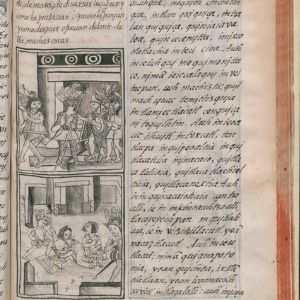Browse
Global Contact

Review
Mesoamerican Photo Archives
The excellent images provided here can serve as a stimulus to further research for students interested in Mesoamerican history and in broader comparative history.
Source
The Florentine Codex
This is an excerpt from the twelfth book of the Historia general de las Cosas de Nueva España (General History of the Things of New Spain), an encyclopedic work about the people and culture of central Mexico compiled by Fray Bernardino Sahagún (1499-1590).
Review
Guaman Poma - El primer nueva corónica y buen gobierno
This digital version of Guaman Poma’s manuscript provides teachers and students with an opportunity to think about the relationship between events and the way that they are recorded, and about the materials that historians use to interpret the past.
Review
Documenting a Democracy: Australia's Story
This site has particular strengths in presenting legal and constitutional materials on the emergence of a democratic nation in a colonial context.Teaching
Long Teaching Module: Doña Marina, Cortés' Translator
What is the language of conquest? What language do people speak when they battle for land and autonomy, or meet to negotiate? During the conquest of Mexico, Spanish and Nahuatl—the mother tongues of the conquistadors and the Mexica—grew newly powerful.
Source
Press Release Regarding the Berlin Wall Memorial at the Baker Institute (Rice University)
In 2000, 11 years after the fall of the Berlin Wall, Rice University installed a section of the former wall as a permanent part of the Baker Institute.

Review
Russian Church and Native Alaskan Cultures
Supplementing each chapter are as many as 31 digitized images or manuscripts. The exhibit is both informative and thought-provoking.
Review
Internet African History Sourcebook
The site provides broad chronological and geographic coverage, with a particularly impressive list of sources for ancient Egypt and Greek and Roman Africa. It is a gateway to an abundance of information.
Review
Vistas: Visual Culture in Spanish America, 1520-1820
Students could speculate on who made the objects, who used them, and how they were used. This would give them a sense of the kind of interpretive work done by historians.
Review